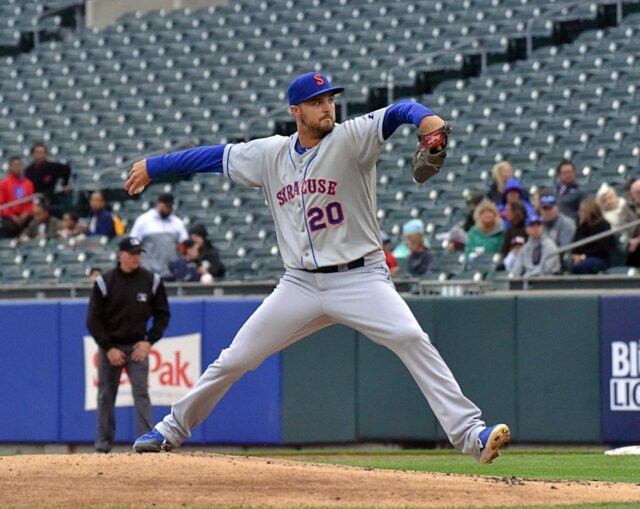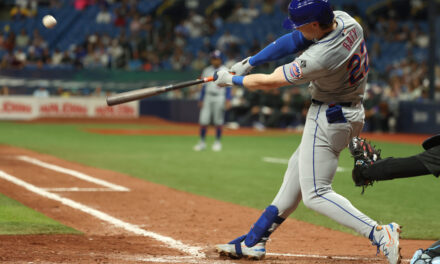
Photo by James Farrance Photography
With Noah Syndergaard on the injured list, the Mets have called up right-hander Walker Lockett, who is the last remaining healthy starting pitcher on the team’s 40-man roster. With Syndergaard’s injury not being as serious as initially feared, we do not know if this is this will be Lockett’s only start or if he is going to get more chances. Perhaps, that will depend on how he pitches.
Before delving deeper into the scouting reports and repertoire, it is important to first note Lockett started the season in Extended Spring Training due to elbow soreness. In his four starts in Triple-A, he has averaged 85 pitches per start with a high of 92, which he reached twice. Aside from how he’s pitching, there is a legitimate question as to how deep into a game he can go right now.
Fortunately, he is the type of a pitcher who could potentially go deep into games with a limited pitch count because he is a sinkerball pitcher who pitches to contact. In fact, in his minor league career, he has a struck out only 6.8 batters per nine. Between his low strikeout rate and his low walk rate, he is someone who is going to force the offense to put the ball in play.
5 scoreless innings last night for #Mets pitching prospect Walker Lockett. Including these 3 of his 4 Ks on the night. Showed impeccable command all night of his FB and breaking balls. pic.twitter.com/bbNZCdFCed
— Ernest Dove (@ernestdove) May 25, 2019
Lockett predominantly throws a low 90s sinker which is a worm killer. The same could be said for his curveball which could be a little slurvy. With him focusing on this power sinker and curve, he had a 1.57 ground out to fly ball out ratio with a 53.7 ground ball percentage in the minors.
With this combination, he struggled in his brief cup of coffee with the Padres last year. In three starts and one relief appearances, he was 0-3 with a 9.60 ERA and a 2.133 WHIP. Part of the was bad luck with him yielding a .360 BABIP and only having a 60.6 percent strand rate.
However, it should be noted the Padres had a very good defensive ball club last year with their 48 team DRS being the fourth best in the National League. The only position where they had a negative DRS in the infield was second base. On that front, you could see things might’ve stabilized for Lockett for more appearances.
Still, with Lockett only getting soft contact 16.7 percent of the time, it’s debatable how much better he would have been. With respect to this Mets team, they have the worst defense in the National League this year, and as noted by Mark Simon of The Athletic, the Mets are one of the worst shifting teams in all of baseball.
Ultimately, Lockett has an arsenal which could potentially succeed at the Major League level. What’s up for debate is whether this Mets team gives him that chance to succeed, and ultimately, whether it worth was trading Kevin Plawecki to the Indians to find out.















